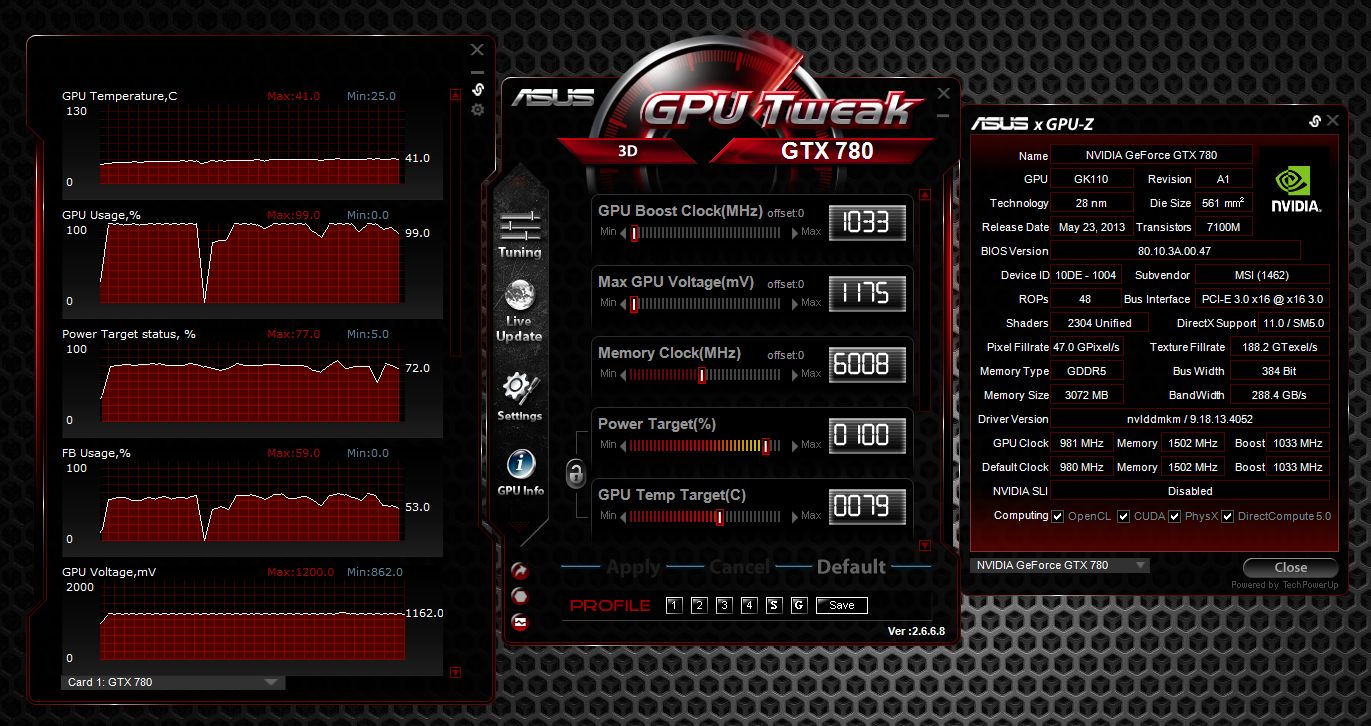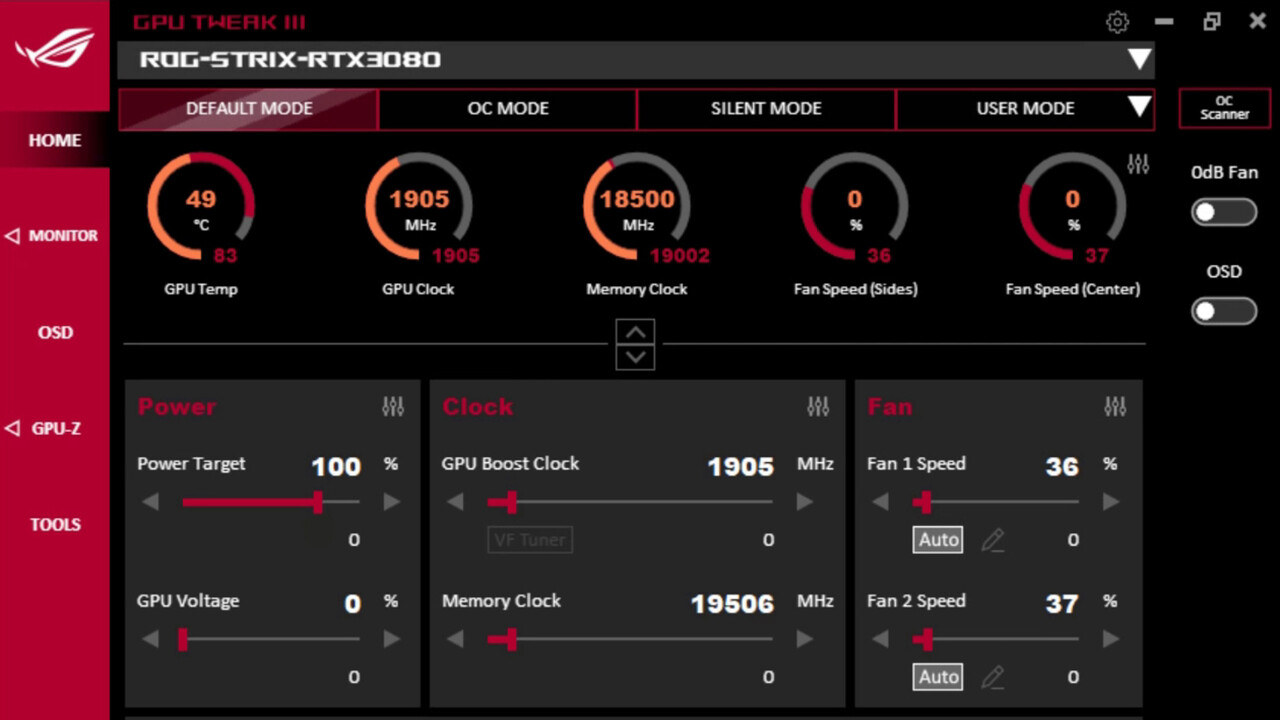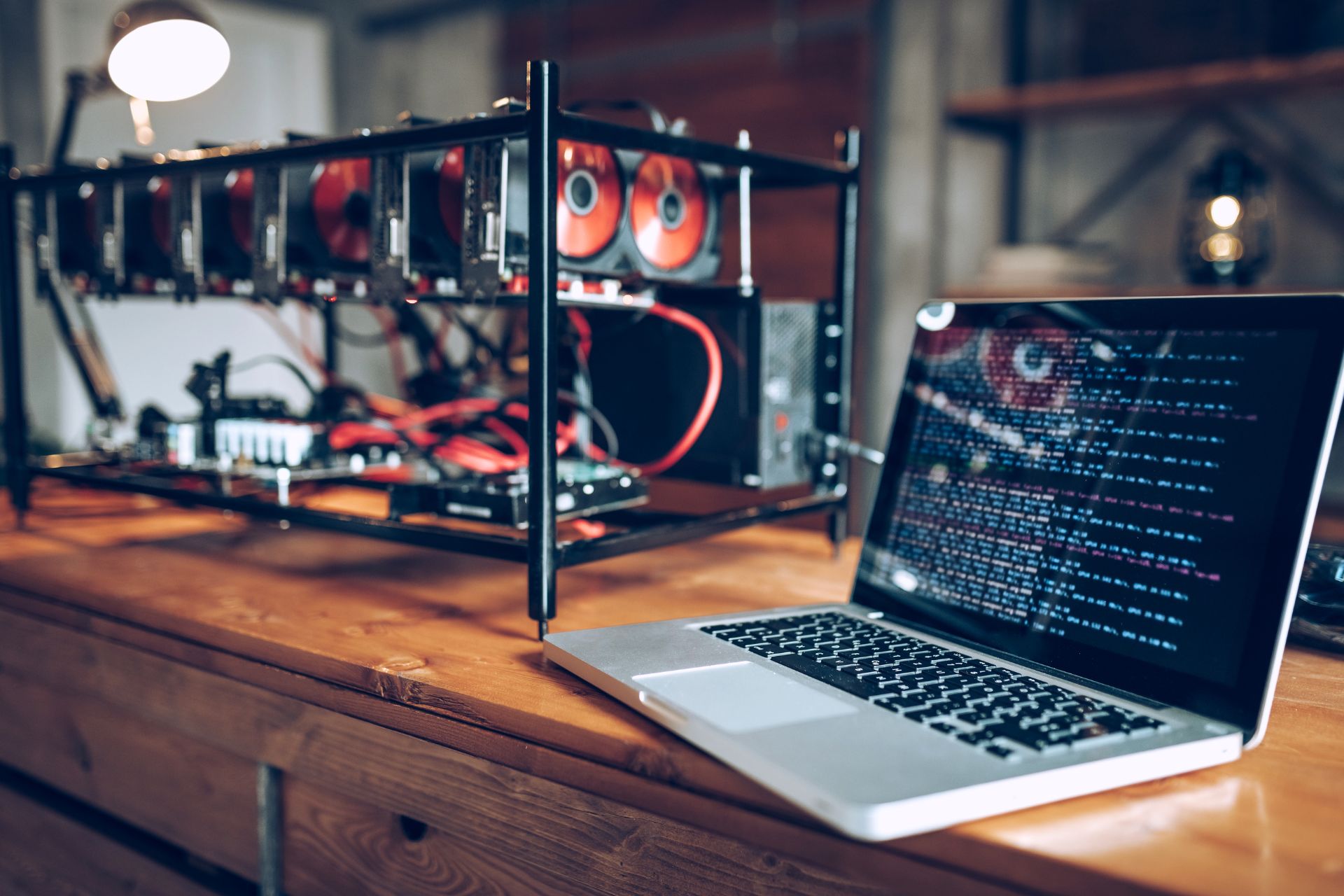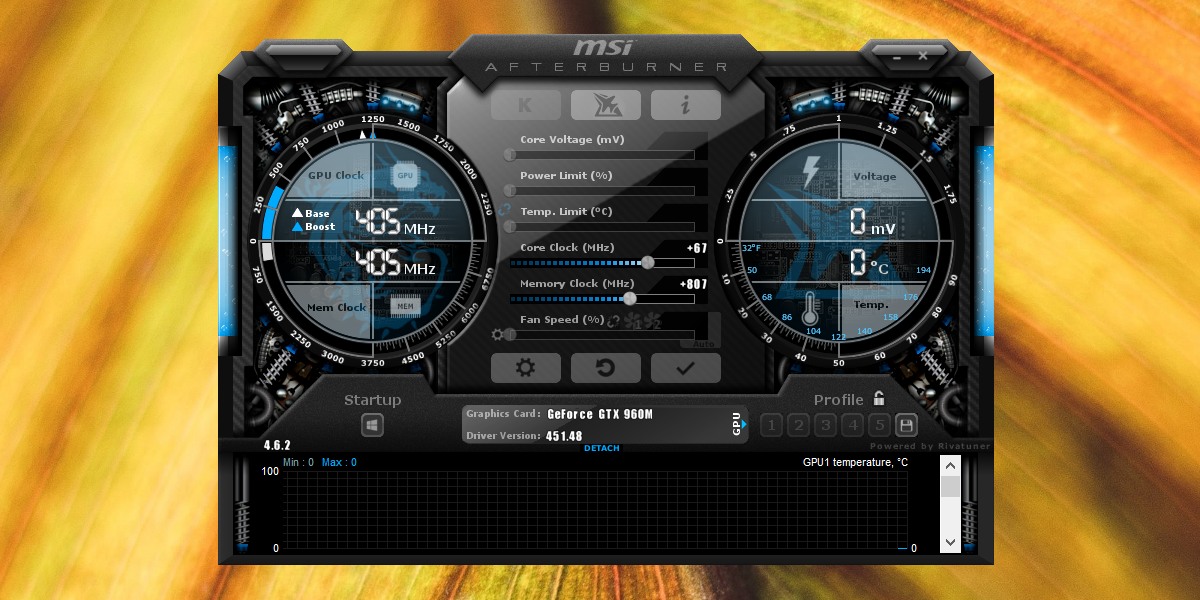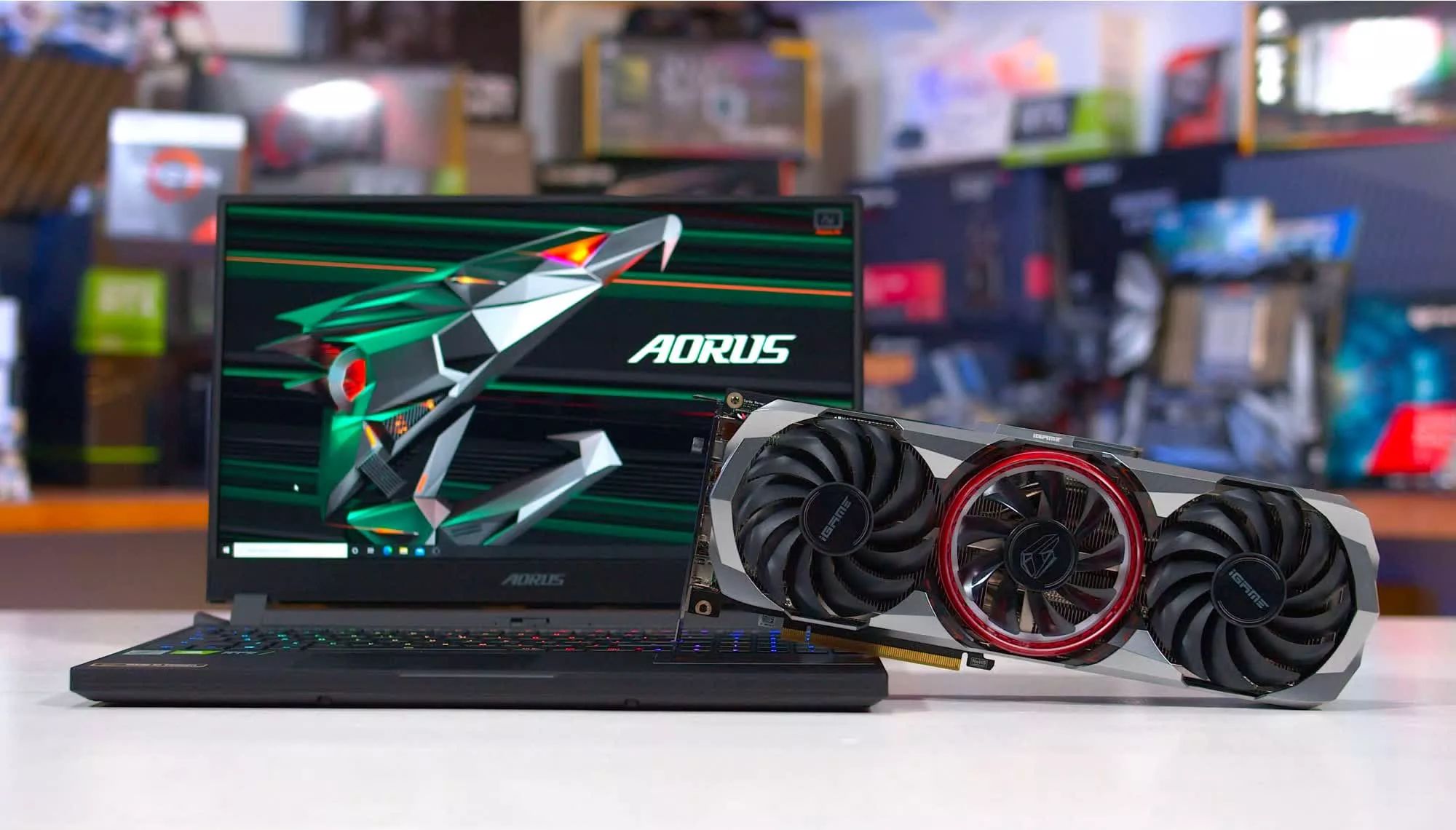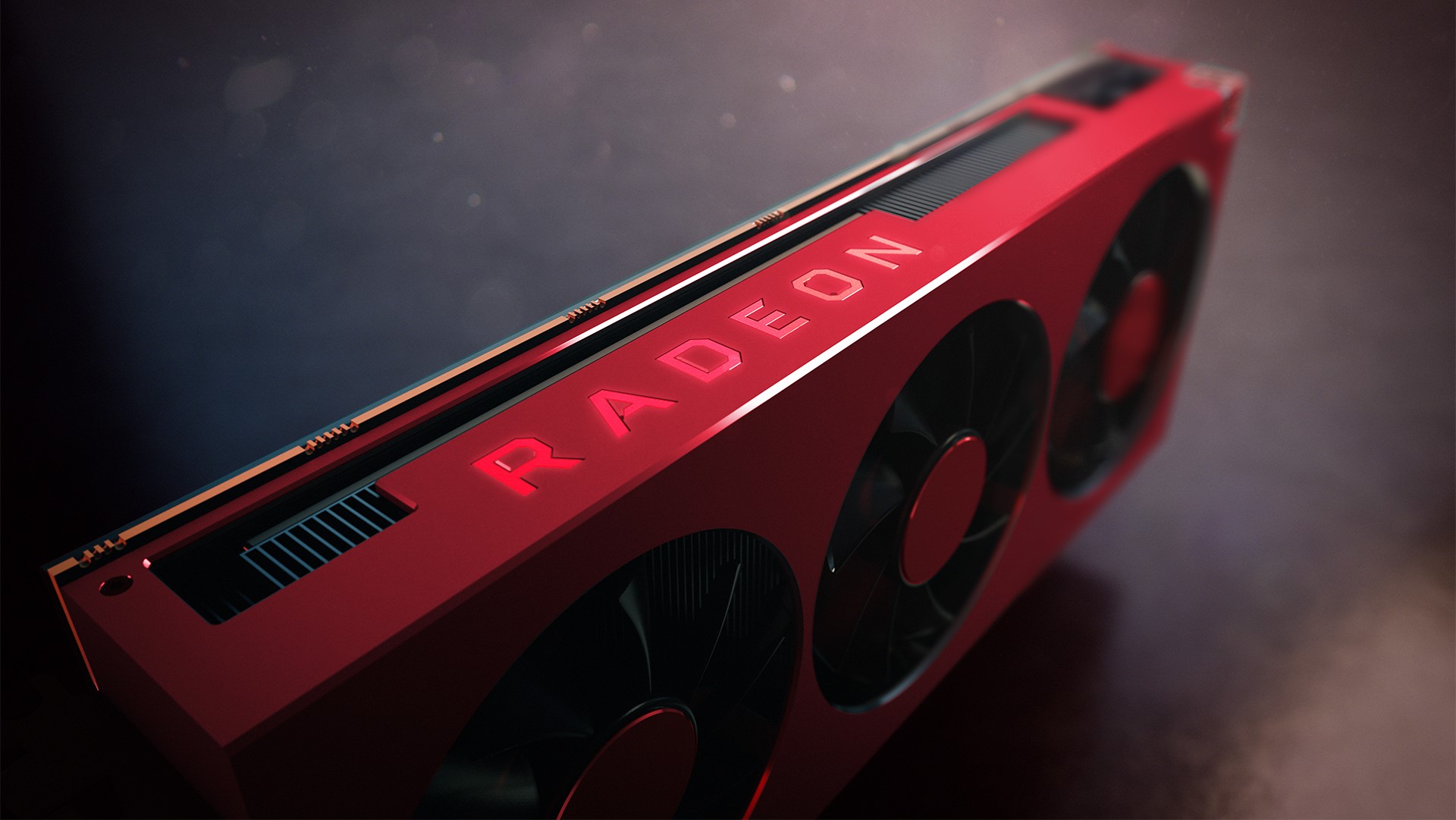What Should GPU Clock Speed Be
When it comes to optimizing your GPU’s performance, understanding the ideal clock speed is essential. The GPU clock speed refers to how fast the graphics processing unit (GPU) operates and directly impacts the performance of your graphics card.
The clock speed of a GPU is measured in megahertz (MHz) or gigahertz (GHz) and determines how quickly the GPU can process data and perform calculations. A higher clock speed generally results in faster processing and smoother graphics rendering, but finding the right balance is crucial.
The ideal GPU clock speed largely depends on the specific requirements of your tasks, such as gaming or professional work. Let’s explore the factors that influence GPU clock speed selection.
One important factor is the GPU’s architecture. Different GPU architectures have varying optimum clock speeds that deliver the best performance. The GPU manufacturer’s recommendations should be taken into consideration when setting the clock speed.
Another factor to consider is the workload you plan to put on the GPU. For gaming, a higher clock speed is generally preferred to handle the demanding graphics and deliver a smooth gaming experience. On the other hand, for professional work like 3D rendering or video editing, a balance between clock speed and stability is crucial to ensure accurate output.
Furthermore, the GPU’s cooling system plays a vital role in determining the optimal clock speed. A well-cooled GPU can sustain high clock speeds for longer periods without thermal throttling. Proper cooling, such as utilizing aftermarket cooling solutions or ensuring good airflow in your PC case, can help you achieve higher clock speeds without compromising stability.
Monitoring and adjusting the clock speed is another aspect worth mentioning. Many GPU monitoring tools allow you to keep an eye on the clock speed in real-time. Overclocking, which involves increasing the clock speed beyond the manufacturer’s specification, can provide additional performance benefits but requires caution to prevent overheating or stability issues.
In summary, the ideal GPU clock speed is subjective and depends on the specific use case. It is essential to consider factors such as GPU architecture, workload, cooling, and monitoring when determining the appropriate clock speed. By finding the right balance, you can optimize your GPU’s performance and enhance your overall computing experience, whether you are a gamer or a professional in need of high-end graphics processing.
Introduction
Graphics processing units (GPUs) play a vital role in today’s computing world, enabling us to experience stunning visuals, perform complex calculations, and accelerate various tasks. GPUs consist of numerous components, and one crucial aspect that directly impacts their performance is the clock speed.
The GPU clock speed determines how quickly the graphics card can process data and perform calculations. It is measured in megahertz (MHz) or gigahertz (GHz). Understanding the ideal clock speed for your GPU is essential for optimizing its performance and achieving the best results in gaming, professional work, or other GPU-intensive tasks.
In this article, we will explore the factors that influence GPU clock speed selection and discuss the appropriate clock speeds for different use cases. We will also delve into monitoring and overclocking, as well as the impact of cooling on GPU clock speed.
By the end of this article, you will have a better understanding of what GPU clock speed is and how it affects your computing experience. Armed with this knowledge, you can make informed decisions when it comes to adjusting your GPU’s clock speed to maximize its performance while maintaining stability.
Whether you are a gamer looking for optimal frame rates and smooth gameplay or a professional seeking high-end graphics processing for tasks like 3D rendering and video editing, understanding GPU clock speed is paramount to achieving your desired outcomes.
So, let’s dive into the world of GPU clock speeds and discover what the ideal clock speed should be for your specific needs.
Understanding GPU Clock Speed
GPU clock speed refers to the frequency at which the graphics processing unit operates. It determines how quickly the GPU can process instructions and perform calculations. Clock speed is measured in megahertz (MHz) or gigahertz (GHz), indicating the number of cycles per second that the GPU can execute.
Essentially, the higher the clock speed, the more operations the GPU can perform in a given time frame. This directly impacts the GPU’s processing power and its ability to handle complex graphics and computations.
GPU clock speed is determined by the GPU’s architecture and is set by the manufacturer. Different GPU architectures have different default clock speeds, optimized for specific performance levels and power consumption.
It’s important to note that not all GPUs have the same clock speed. Higher-end GPUs typically have higher default clock speeds, enabling them to handle more demanding tasks and deliver better performance.
Understanding GPU clock speed is essential in optimizing your system’s performance for different tasks. For instance, in graphically demanding games, a higher clock speed can help render smooth and visually appealing graphics, ensuring a more immersive gaming experience.
On the other hand, for tasks such as video editing or 3D rendering, where accuracy and precision are paramount, a balance between clock speed and stability is crucial. Too high of a clock speed can introduce errors and artifacts in the final output.
GPU clock speed, when combined with other components such as memory speed, determines the overall performance of the graphics card. A well-rounded GPU should have a harmonious balance between clock speed, memory speed, and other specifications.
To summarize, GPU clock speed is a critical factor in understanding the performance capabilities of a graphics card. By comprehending how clock speed impacts the GPU’s processing power, you can make informed decisions regarding the appropriate clock speed for your specific needs.
Factors That Influence GPU Clock Speed
The clock speed of a GPU is influenced by several factors that determine its optimal operating frequency. Understanding these factors is crucial in determining the appropriate clock speed for your specific requirements. Let’s explore the key factors that influence GPU clock speed:
- GPU Architecture: Different GPU architectures have varying optimal clock speeds. Manufacturers design their GPUs with specific architectures optimized for certain clock speeds. It is important to consider the recommended clock speed range provided by the GPU manufacturer when adjusting the clock speed.
- Power and Thermal Constraints: The power and thermal constraints of a GPU significantly impact its clock speed. GPUs come with power and thermal limits to prevent overheating and maintain stability. If a GPU operates at a clock speed that exceeds its power or thermal threshold, it can result in crashes or performance degradation. It is important to ensure that the clock speed is within the specified power and thermal limits.
- Manufacturing Variations: Each GPU may have slight manufacturing variations that can affect its inherent capabilities and stability. These variations can impact the maximum achievable clock speed. It is essential to consider the specific characteristics of your GPU when selecting the clock speed to ensure stability and optimal performance.
- Bios and Firmware: The GPU’s BIOS (Basic Input/Output System) and firmware also play a role in determining the clock speed. Manufacturers release BIOS updates to optimize performance and stability. Keeping your GPU’s BIOS and firmware up to date is crucial in achieving the best possible clock speed performance.
- Voltage and Power Target: The voltage supplied to the GPU and the power target settings can influence the achievable clock speed. Increasing the voltage or power target can potentially allow the GPU to achieve higher clock speeds. However, it is important to note that altering voltage and power settings should be done cautiously, as it can increase power consumption and potentially impact the longevity of the GPU.
Understanding these factors will help you make informed decisions when adjusting the clock speed of your GPU. It is important to consider the specific characteristics of your GPU model, manufacturer’s recommendations, power and thermal constraints, and any manufacturing variations to achieve optimal clock speed performance while maintaining stability.
The Role of GPU Clock Speed in Performance
The GPU clock speed plays a crucial role in determining the overall performance of a graphics card. It directly impacts the speed at which the GPU can process data, perform calculations, and render graphics. Understanding the relationship between GPU clock speed and performance is essential for optimizing your computing experience. Let’s delve deeper into the role of GPU clock speed in performance:
Processing Power: The clock speed of a GPU directly affects its processing power. A higher clock speed means that the GPU can execute instructions and calculations at a faster rate. This results in quicker rendering of graphics, smoother gameplay in games, and faster performance in GPU-intensive tasks such as 3D rendering, simulation, and scientific computing.
Frame Rates in Gaming: In gaming, GPU clock speed has a significant impact on frame rates. Higher clock speeds allow the GPU to render and display more frames per second (FPS), resulting in smoother gameplay. This is especially important in fast-paced games where quick responses and smooth motion are critical.
Graphics Quality: GPU clock speed also affects the quality of graphics rendered by the GPU. A higher clock speed allows the GPU to process complex features, such as high-resolution textures, advanced lighting effects, and realistic shadows, more efficiently. This results in visually stunning graphics with greater detail and realism.
GPU-Intensive Tasks: In addition to gaming, GPU clock speed is essential for various GPU-intensive tasks such as video editing, 3D rendering, and machine learning. These tasks require substantial computational power and benefit from higher clock speeds to accelerate processing and reduce rendering times.
It’s important to note that while GPU clock speed is a crucial factor in performance, it is not the sole determinant. Other factors, such as the number of GPU cores, memory bandwidth, and memory size, also play a significant role. A well-balanced combination of these factors ensures optimal performance in different applications and usage scenarios.
When optimizing performance, it’s crucial to find the right balance between clock speed and stability. Increasing the clock speed beyond the GPU’s capabilities can lead to instability, crashes, and artifacts in graphics. It’s recommended to gradually increase the clock speed, monitor temperatures, and test system stability when overclocking to ensure a smooth and reliable computing experience.
In summary, GPU clock speed directly affects the performance of a graphics card and plays a vital role in gaming, graphics rendering, and other GPU-intensive tasks. Finding the optimal clock speed for your specific requirements and maintaining stability is essential for maximizing the GPU’s processing power and achieving the best possible performance in your computing endeavors.
Ideal GPU Clock Speed for Gaming
When it comes to gaming, finding the ideal GPU clock speed is crucial for achieving smooth gameplay and maximizing performance. The GPU clock speed directly impacts the frame rates, graphics quality, and responsiveness of your gaming experience. Here are some considerations for determining the ideal clock speed for gaming:
Game Requirements: Different games have varying graphics demands. Some games may require higher clock speeds to ensure smooth gameplay and optimal frame rates, especially for graphically intensive titles. It is important to research the recommended system requirements for the games you plan to play and consider the GPU clock speed recommendations.
Monitor Refresh Rate: The refresh rate of your monitor is another factor to consider when determining the ideal GPU clock speed for gaming. If you have a high refresh rate monitor, such as 144Hz or 240Hz, a higher GPU clock speed can help you fully leverage the benefits of a high-refresh-rate display. This ensures that your GPU can deliver enough frames per second to match the monitor’s refresh rate, resulting in a smoother gaming experience.
Overclocking Potential: Overclocking the GPU can push the clock speed beyond the manufacturer’s specifications, potentially increasing gaming performance. However, caution is advised when overclocking, as it can lead to higher power consumption, increased heat output, and potential stability issues. It is essential to monitor temperatures, test for system stability, and gradually increase the clock speed to avoid instability and overheating.
Cooling Solutions: Adequate cooling is critical for optimal GPU performance during gaming sessions. Higher clock speeds generate more heat, and without proper cooling, the GPU may throttle its performance to prevent overheating. Ensure that your GPU is equipped with effective cooling solutions such as fans or liquid cooling, and that your computer case has adequate airflow to keep temperatures in check.
GPU Manufacturer Software: GPU manufacturers often provide software tools that allow you to optimize clock speeds and other settings for gaming. These tools can be useful in finding the ideal clock speed for your specific GPU model. They may offer pre-configured profiles for different games or allow you to manually adjust clock speeds to achieve the best performance.
Remember that the ideal GPU clock speed for gaming may vary depending on the game, your monitor’s refresh rate, and the specific characteristics of your GPU. It is essential to find the right balance between clock speed, stability, and cooling to ensure a smooth and enjoyable gaming experience.
Experimentation and monitoring are key when determining the ideal GPU clock speed for gaming. By adjusting clock speeds, testing performance, and monitoring system stability and temperatures, you can find the sweet spot that provides the best gaming experience on your specific hardware setup.
Ideal GPU Clock Speed for Professional Work
When it comes to professional work, such as video editing, 3D rendering, or scientific simulations, finding the ideal GPU clock speed is essential for achieving efficient and accurate results. The GPU clock speed directly impacts the performance and rendering times of these tasks. Here are some considerations for determining the ideal clock speed for professional work:
Accuracy and Stability: Professional work often requires accuracy and stability to ensure precise results. While higher clock speeds can offer faster processing, it is essential to find a balance between clock speed and stability. Running the GPU at extremely high clock speeds may introduce errors or artifacts, compromising the accuracy of your work. Ensure that the GPU operates at a clock speed that maintains stability while delivering the desired performance.
Memory Bandwidth: Many professional workloads heavily rely on GPU memory bandwidth. Higher clock speeds can improve memory bandwidth, allowing for faster data transfer and computation. Consider the memory bandwidth requirements of your specific work tasks and adjust the clock speed accordingly to optimize performance.
Optimized Compute Units: Some professional applications, such as 3D rendering or machine learning, utilize the GPU’s compute units for parallel processing. Clock speed can impact the performance of these compute units, so it is crucial to find the right balance between clock speed and the number of compute units available on your GPU. Adjust the clock speed to match the workload requirements and the GPU’s compute unit capabilities.
Software Recommendations: Professional software applications often provide recommendations or presets for GPU clock speed settings. These recommendations are typically based on extensive testing and optimization. Take advantage of these recommendations to choose the ideal clock speed that maximizes performance and stability for your specific professional work applications.
Thermal Considerations: Professional workloads can put a significant strain on the GPU, generating more heat. Ensure that your GPU has adequate cooling solutions to maintain optimal temperatures during intensive tasks. Higher clock speeds can result in increased heat output, so monitor temperatures and adjust clock speeds accordingly to prevent thermal throttling and maintain stability.
Ultimately, the ideal GPU clock speed for professional work depends on the specific task, software requirements, and the characteristics of your GPU. Experimentation, monitoring, and testing are key to finding the right balance between clock speed, stability, and performance. Adjust the clock speed based on the unique demands of your professional workloads and strive for the optimal balance that delivers the best results while maintaining stability and accuracy.
How to Monitor and Overclock GPU Clock Speed
Monitoring and overclocking GPU clock speed can be a useful way to optimize performance and extract additional power from your graphics card. However, it is essential to approach overclocking with caution and take the necessary steps to monitor and maintain system stability. Here are some steps to monitor and overclock GPU clock speed:
1. Use GPU Monitoring Software: Install and use GPU monitoring software to track your GPU’s clock speed in real-time. Programs such as MSI Afterburner, EVGA Precision X1, or GPU-Z provide detailed information about clock speed, temperature, fan speed, and other GPU statistics. These tools allow you to monitor and analyze the impact of clock speed adjustments on performance.
2. Research Your GPU Model: Before attempting to overclock your GPU, research and understand the limitations and capabilities of your specific GPU model. Different GPUs have different overclocking potentials, and knowing the safe operating ranges can help guide your overclocking attempts.
3. Gradually Increase Clock Speed: Begin by increasing the GPU clock speed in small increments, such as 10-20 MHz, and test the stability of your system after each adjustment. Run stress tests or benchmarks to ensure that the GPU remains stable under load. If stability issues arise, reduce the clock speed to a stable level or consider adjusting other parameters such as voltage or power target.
4. Monitor Temperatures: As you increase the clock speed, pay attention to the GPU temperatures. Higher clock speeds generate more heat, and monitoring temperatures is crucial to prevent overheating and thermal throttling. Ensure that your GPU stays within safe operating temperatures by providing adequate cooling through proper airflow, case fans, or aftermarket cooling solutions.
5. Test with GPU-Intensive Workloads: To ensure the stability and reliability of your overclocked GPU, test it with GPU-intensive workloads such as games, rendering software, or other demanding applications. This will help you identify any crashes, artifacts, or stability issues that may arise due to the increased clock speed.
6. Keep an Eye on Power Consumption: Overclocking your GPU can lead to increased power consumption. Make sure your power supply can handle the increased demands and monitor power consumption during overclocking. Excessive power demands without sufficient power supply capacity can result in system instability or even damage to components.
7. Be Mindful of Warranty and Risks: Overclocking your GPU typically voids the warranty provided by the manufacturer. It is important to understand the risks involved and accept the potential consequences before proceeding with overclocking. Practice overclocking at your own risk and take steps to ensure system stability and longevity.
Remember, overclocking your GPU should be approached with caution and performed responsibly. Always prioritize stability and monitor your GPU’s performance and temperatures. Take the necessary precautions to avoid damage to your hardware and consider seeking expert guidance if you are not confident in your overclocking abilities.
The Impact of Cooling on GPU Clock Speed
Cooling plays a crucial role in the performance and longevity of your GPU, especially when it comes to maintaining optimal clock speeds. Effective cooling solutions are necessary to dissipate heat and prevent thermal throttling that can hinder GPU performance. Let’s explore the impact of cooling on GPU clock speed:
Preventing Thermal Throttling: Under heavy workload or overclocking, GPUs generate significant amounts of heat. If the temperature exceeds a certain threshold, GPUs will reduce their clock speed to prevent overheating. Insufficient cooling can lead to thermal throttling, which significantly impacts performance. Effective cooling solutions such as fans, heatsinks, or liquid cooling help dissipate heat, allowing the GPU to maintain higher clock speeds for longer durations.
Increasing Overclocking Potential: Cooling significantly affects the overclocking potential of a GPU. Higher clock speeds generate more heat, and if not properly cooled, the GPU will encounter stability issues. With efficient cooling, the GPU remains at lower temperatures, creating thermal headroom for higher clock speeds and increased performance during overclocking.
Longevity and Reliability: Operating at high temperatures for extended periods can affect the longevity and reliability of the GPU. Excessive heat can cause thermal stress on the components, potentially leading to reduced lifespan or hardware failure. Adequate cooling not only prevents overheating but also promotes a longer lifespan for your GPU by keeping temperatures within safe operating limits.
Achieving Consistent Performance: Consistency is vital in GPU performance, especially in demanding tasks like gaming or professional work. Effective cooling solutions ensure that the GPU operates at optimal temperatures, promoting consistent performance over extended periods. Stable and reliable clock speeds result in smoother gameplay, accurate rendering, and reliable outputs for professional work.
Considerations for Cooling: When it comes to cooling a GPU, several factors should be considered. Proper airflow within the computer case helps dissipate heat from the GPU and other components. Make sure to clean or replace dusty fans and regularly maintain your system to prevent dust buildup, which can impede cooling efficiency. Additional cooling solutions such as aftermarket GPU coolers or liquid cooling can provide enhanced thermal management in more demanding scenarios.
Monitoring and Adjusting Cooling: Monitoring GPU temperatures using software tools allows you to keep track of heat levels and adjust cooling solutions if necessary. If you notice consistently high temperatures or frequent thermal throttling, it may be an indication that your cooling solution needs improvement. Consider upgrading fans, reapplying thermal paste, or adjusting fan curves to enhance cooling performance.
In summary, cooling is a critical aspect of maintaining optimal GPU clock speeds and overall performance. Effective cooling solutions prevent thermal throttling, increase overclocking potential, promote longevity, and ensure consistent performance. By investing in proper cooling, you can unlock the full potential of your GPU and enjoy a reliable and high-performance computing experience.
Conclusion
Understanding GPU clock speed and its impact on performance is essential for optimizing your computing experience, whether you are a gamer or a professional user. GPU clock speed directly influences processing power, frame rates, graphics quality, and overall system stability. By finding the ideal GPU clock speed for your specific needs and maintaining proper cooling, you can unlock the full potential of your graphics card.
For gaming, the ideal GPU clock speed depends on factors such as game requirements and monitor refresh rate. Balancing clock speed, stability, and cooling is crucial for achieving smooth gameplay and maximizing frame rates. Overclocking can provide additional performance benefits but should be done cautiously and while monitoring system stability.
In professional work, such as video editing or 3D rendering, finding the ideal GPU clock speed involves considering accuracy, stability, and memory bandwidth requirements. Achieving optimal clock speeds ensures efficient rendering and reduces project completion times. Monitoring temperatures and maintaining adequate cooling are essential to prevent thermal throttling and maintain stability.
When monitoring and overclocking GPU clock speed, using reliable software tools can help track performance metrics, temperature, and fan speed. Gradual adjustments, thorough testing, and monitoring of system stability and temperatures are key to achieving a stable and efficient overclock. However, it is important to consider the risks involved and adhere to warranty guidelines.
Lastly, cooling is a vital aspect in maintaining optimal GPU clock speeds and performance. Proper cooling solutions prevent thermal throttling, increase overclocking potential, prolong GPU lifespan, and ensure consistent performance during demanding tasks. Regular maintenance, good airflow, and potentially upgrading cooling components enhance overall cooling efficiency.
Ultimately, finding the ideal GPU clock speed and maintaining appropriate cooling is a delicate balance between maximizing performance and ensuring stability. By understanding the factors that influence clock speed, monitoring system metrics, and taking necessary precautions, you can optimize the performance of your GPU and elevate your computing experience.










